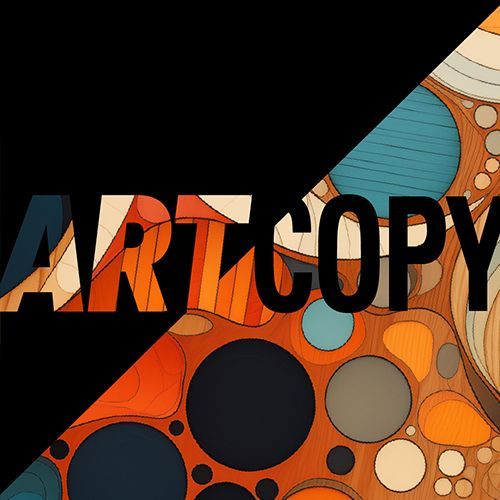Ten Branding Best Practices for B2B SaaS Companies
From FinTech and MarTech to EdTech and InsurTech, the B2B SaaS (Software as a Service), is flooded with vendors seeking to stand apart. A well-crafted brand strategy had never been more crucial. Strong positioning and messaging, combined with a unique visual identity, not only differentiates a company from its competitors but also builds trust, credibility, and emotional connections with its target audience. Here, we delve into the best practices for B2B SaaS companies to build and maintain a compelling brand.
1. Understand Your Target Audience
The foundation of any successful brand strategy is a deep understanding of the target audience. B2B SaaS companies must identify the real humans who are making the decisions and segment their audience based on industry, company size, pain points, and buying behavior. This segmentation allows for more personalized and relevant messaging.
Example: HubSpot, a leading marketing, sales, and customer service SaaS platform, has a diverse audience ranging from small businesses to large enterprises. HubSpot tailors its messaging to address the specific needs of each segment, providing targeted solutions and resources.
2. Craft a Clear and Compelling Value Proposition
A value proposition succinctly communicates the unique benefits and value that your SaaS product offers. It should address the pain points of your target audience and highlight what sets your product apart from competitors.
Example: Slack’s value proposition is "Slack is where work happens." This simple yet powerful statement encapsulates Slack’s core benefit of streamlining team communication and collaboration, making it indispensable for modern workplaces.
3. Develop a Consistent Brand Identity
Consistency is key in branding. Your brand identity should be cohesive across all touchpoints, including your website, social media, email marketing, and customer support. This includes visual elements (logo, color scheme, typography) and messaging (tone, voice, key messages).
Example: Salesforce, a pioneer in the SaaS industry, maintains a consistent brand identity with its distinctive cloud logo, blue color palette, and approachable, friendly tone of voice. This consistency helps reinforce brand recognition and trust.
4. Humanize Your Brand
In the B2B space, it’s easy to focus solely on the technical aspects of your product. However, humanizing your brand can create stronger emotional connections with your audience. Showcase the people behind your company, share customer success stories, and engage in authentic conversations.
Example: LogRhythm, known for its cybersecurity platform, underwent a rebrand with the guidance of Speak!. The resulting brand story and visual identity amplifies the confidence the heroes working behind the scenes gain from working with a trusted platform. Focusing on the human impact of the solution created an authentic connection with stressed cyber teams on the front line.
5. Leverage Content Marketing
Content marketing is a powerful tool for establishing thought leadership and building trust in the B2B SaaS space. Create valuable, educational content that addresses the challenges and needs of your target audience. This can include blog posts, whitepapers, case studies, webinars, and more.
Example: Moz, an SEO software company, has built a strong brand through its extensive content marketing efforts. Their blog, “Moz Blog,” is a go-to resource for SEO professionals, offering insights, tips, and industry updates that demonstrate Moz’s expertise and thought leadership.
6. Utilize Social Proof
Social proof, such as testimonials, case studies, and user reviews, can significantly enhance your brand’s credibility. Potential customers are more likely to trust the experiences of their peers than marketing messages from the company itself.
Example: Zendesk, a customer service software provider, prominently features customer stories and testimonials on its website. These real-world examples of how companies have benefited from Zendesk’s solutions help build trust and encourage new prospects to take action.
7. Invest in a Memorable Logo and Visual Identity
Your logo and visual identity are the face of your brand. They should be memorable, distinctive, and reflective of your company’s values and personality. A well-designed logo can leave a lasting impression and enhance brand recall.
Example: Intercom, a customer messaging platform, has a simple yet memorable logo featuring a smiley face. This logo, combined with a clean and modern visual identity, effectively conveys Intercom’s friendly and approachable brand personality.
8. Focus on Customer Experience
Exceptional customer experience is a cornerstone of a strong brand. Ensure that every interaction with your customers, from onboarding to support, reflects your brand values and commitment to their success. Happy customers are more likely to become brand advocates.
Example: Zoom, the video conferencing software, places a strong emphasis on customer experience. Their user-friendly interface, reliable performance, and responsive customer support have contributed to their reputation as a trusted and beloved brand.
9. Engage on Social Media
Social media is not just for B2C companies. B2B SaaS companies can use social media platforms to engage with their audience, share valuable content, and showcase their brand personality. It’s also an excellent channel for customer support and feedback.
Example: Adobe Creative Cloud actively engages with its audience on social media platforms like Twitter, LinkedIn, and Instagram. They share tutorials, customer stories, and industry insights, reinforcing their brand as a leader in creative software solutions.
10. Monitor and Adapt Your Brand Strategy
Branding is not a one-time effort; it requires continuous monitoring and adaptation. Keep an eye on industry trends, customer feedback, and competitor activities. Be willing to evolve your brand strategy to stay relevant and meet the changing needs of your audience.
Example: Atlassian, known for its collaboration and project management software, regularly updates its brand strategy to reflect the evolving needs of its customers. Their recent rebranding efforts included a refreshed visual identity and refined messaging to better align with their mission and values.
Bonus Tip: Outside Perspective is Beneficial
Following these best practices and learning from successful examples, can help your B2B SaaS companies create a compelling brand that resonates with your target audience. However, tapping the expertise of a specialist brand agency that knows how to ask the right questions and pull the right threads can accelerate your success.
Take two minutes to answer a few questions and get a head start on your brand initiative. Speak! will perform an initial brand diagnostic and provide a video synopsis of recommended priorities, opportunities, and candid feedback.




